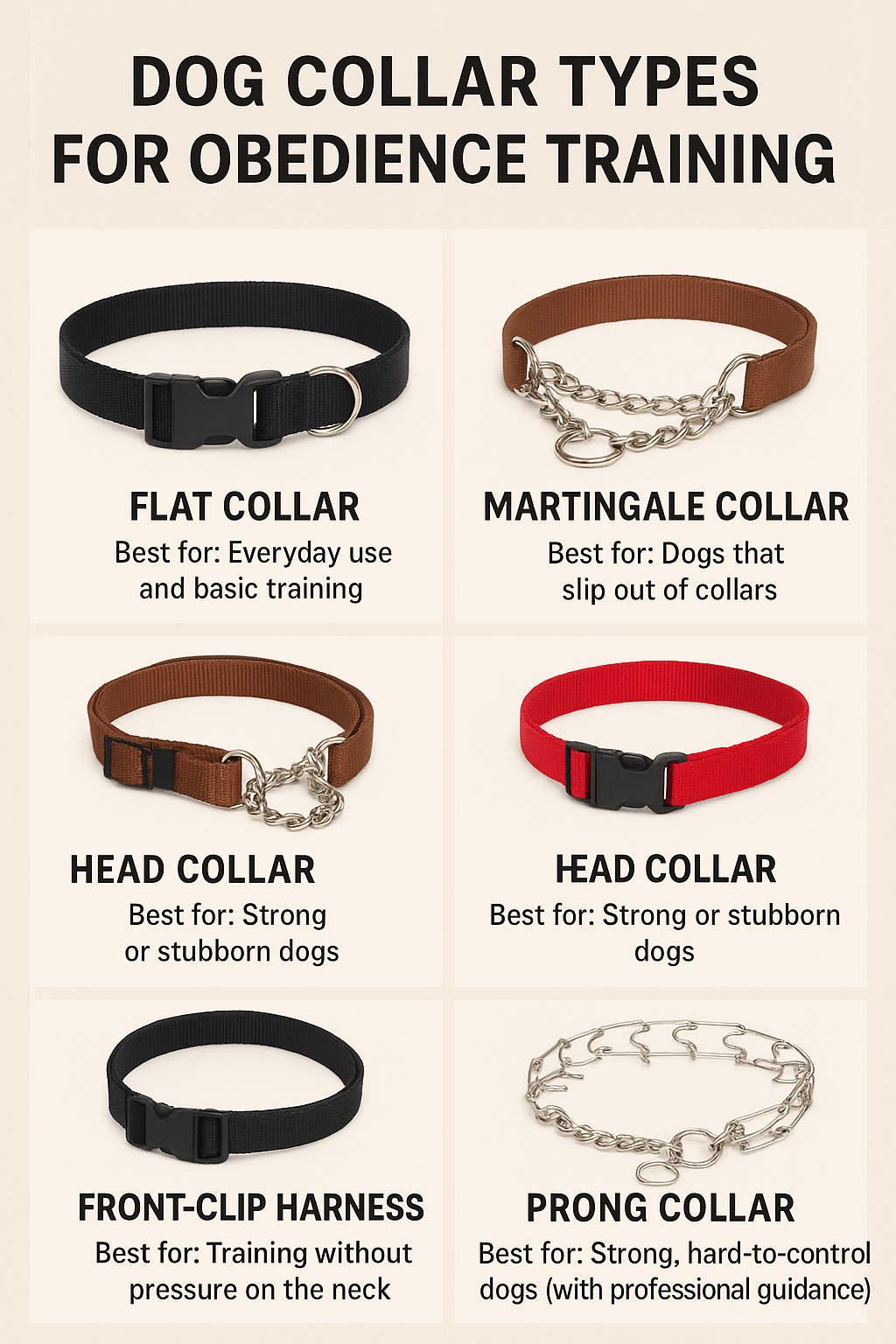Training your dog to follow commands and behave well is an important part of responsible pet ownership. Choosing the right collar can make obedience training easier, safer, and more effective. Different collars serve different purposes, and selecting the right one depends on your dog’s personality, training level, and comfort. Below are some of the most common types of collars used in obedience training.
1. Flat Collars
- Best for: Everyday use and basic training.
Flat collars are the most common type and are suitable for dogs who are already calm and responsive during training. They come in various materials like nylon or leather and can be fitted with ID tags. While they are safe for general use, they may not provide enough control for strong pullers.
2. Martingale Collars
- Best for: Dogs that slip out of collars.
Martingale collars tighten slightly when a dog pulls, without choking. They are popular among trainers for obedience work, especially for breeds with slender necks like Greyhounds. They provide better control while remaining gentle.
3. Head Collars (Halters)
- Best for: Strong or stubborn dogs.
Head collars fit around the dog’s muzzle and behind the ears. They work by guiding the head, making it easier to control the dog’s direction. These collars are highly effective for obedience training but require gradual introduction since some dogs may resist wearing them at first.
4. Harness with Front-Clip Attachment
- Best for: Training without pressure on the neck.
Although technically not a collar, a front-clip harness is a great tool for obedience training. It discourages pulling by redirecting the dog’s movement. Trainers often recommend this option for dogs with neck sensitivities or smaller breeds prone to tracheal issues.
5. Slip Collars (Training Collars)
- Best for: Experienced trainers only.
Also known as choke chains, slip collars tighten when the dog pulls. While they can be effective for obedience training, they must be used correctly to avoid injury. These collars are best handled by professional trainers and not recommended for beginners.
6. Prong Collars (Pinch Collars)
- Best for: Strong, hard-to-control dogs (with professional guidance).
Prong collars distribute pressure evenly around the neck and are designed to mimic a corrective nip from another dog. They can be effective when used responsibly, but misuse may cause harm. Professional instruction is strongly advised before using one.
Tips for Choosing the Right Collar
- Always prioritize comfort and safety.
- Match the collar to your dog’s size, breed, and temperament.
- Start with the least aversive option and progress if necessary.
- Supervise your dog during training sessions to prevent accidents.


